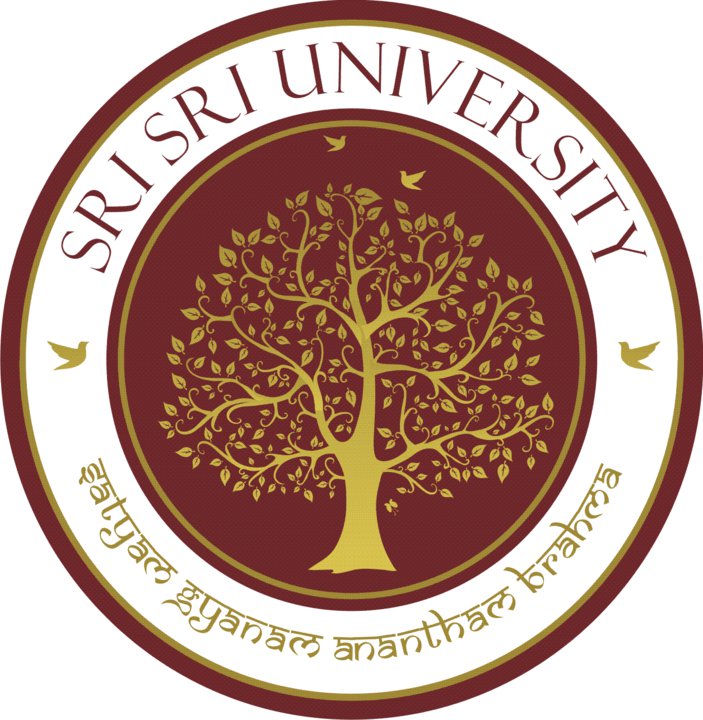Following are excerpts from the interview at http://www.livemint.com/richardlevin.htm.
Leading Indian institutes are good at teaching but they are not research-oriented. What should be the focus now?
The IITs and IIMs are basically good teaching institutions… The biggest contribution made by research universities is that they have advanced knowledge as well as educate quality students. The requisite for making that happen is, one, opening up the structure of faculty compensation so that you can actually attract world-class individuals.
The strong Indian nationals go to graduate schools in the US and they will not come back if they don’t get compensation close to what they get aboard. And right now, they would not unless there is some change in legislation.
The second is the state support—the need for quality laboratory, infrastructure and competitive research grant to advance their work. While there have been some advances in research grants in India, there is still by and large not the quality of the facility that you can have access to in the US, parts of Europe or indeed recently in China.
…
You had an interaction with Ratan Tata (chairman of Tata group). Is he sponsoring a chair?
There is nothing particular to announce now. We are talking to lots of leading Indian families who are interested in Yale getting more involved in India. I hope there will be some support for our relationship. There is a lot of philanthropic interest in higher education of India. I hope Parliament will open the market up to those philanthropists to build universities. They can give some money to Yale, but that will not have the impact.
India is very brand conscious and it seems it wants foreign universities to set up shop here. That will help, but that is not the answer. The answer is great Indian universities and Indian brands. You have done it with companies—you got Tata, Reliance (Reliance Industries Ltd and Reliance-Anil Dhirubhai Ambani Group), Infosys (Technologies Ltd), you got Wipro (Ltd). These are great global brands now. You can do the same with Indian universities rather than co-branding like Yale-India Campus or Harvard-India Campus.
The impression here is Yale is interested in partnering one or more of the proposed innovation universities. Is that true?
We can have partnership in more than one area (but) not as co-brands. There will be some exchanges.
We may have some advisory role, having some of our faculty helping establish these universities. No joint investment. I think the real hope (for innovation university) is private sector support.
How do you see the growth of education in India vis-à-vis China?
… To compete successfully 20 years from now, India and China will need much stronger research universities. China is very aware of this and politically committed to it.
China is making big investments in research laboratories. They are putting lots of money in top universities to make them competitive with Harvard, Yale and Stanford. They are focusing more on a small number of top universities. Politically, that is very hard for India to do because of India’s democracy. It is very hard for America to do so. Solution is to allow the private sector to have a big role in higher education.
I believe you will succeed because India has built great companies in (the) last 20 years. I think a lot of people responsible for that want to give back to the Indian society. They are eager to do what Leland Stanford (founder of Stanford University) and John D. Rockefeller (founder of Chicago University and Rockefeller University) did in America over 100 years ago. If I am not mistaken, all Parliament needs to do is not to give the money away but pass legislation so that will happen.
The term Ivy League seems to have caught on. After China branded some of its university as C-9 or the Chinese Ivy League, India is set to designate at least nine top universities the Indian Ivy League. Does this help?
It reflected something really in China. Those are the universities that China is making disproportionate investment (in). In fact the government made those investments before naming them as Ivy League of China. I don’t know much about the Indian Ivy League. Unless there are much resources, I don’t think it will have that much of impact.
… prashant.n@livemint.com
I have underlined the part that I thought are important. President (of Yale) Levin is right in his answers. Under the current system Indian government can not pay large enough compensations that will attract a large number of top-quality Ph.Ds and faculty from abroad to populate proposed world class research and innovations universities in India. Only private universities backed by Billion dollar level endowment as well as a viable plan to have global level annual funding year after year (note: My university, Arizona State U, has an annual budget of $1.7 Billion plus; Harvard and Stanford annual budgets are about $3 Billion) have a chance to become world class. Fortunately Vedanta University is exactly such a plan. But unfortunately, the Indian government, instead of helping it and showcasing it such that other billionaires from India follow it, is creating hurdles.
November 13th, 2010
Following is from an article in tathay.in.
The proposed Xavier University in Odisha seems to be pushed inside the deep fridge.
Chief Minister Naveen Patnaik eagerly approved the proposed Xavier University in the state in July, 2009.
Thanks to the initiative of Fr.P T Joseph, Director XIMB who brought the issue to the authorities in the Odisha Government about the requirement of Xavier University in the state.
Ananga Udaya Singh Deo, Minister Planning & Coordination, who raised the issue in the State Cabinet in a strong way, impressed the Chief Minister.
With the green signal of the Chief Minister the authorities in XIMB moved ahead with accquiring land nearby the Capital City and a Detailed Plan for the proposed university was prepared.
Every thing is ready.

So every body expected that the much needed Xavier University Bill will come up in the Winter Session of the Odisha Legislative Assembly.
Now on 23 November, Winter Session of the OLA begins.
However there is no sign of the proposed bill on Xavier varsity, revealed an officer in the Department of Law.
Why is it so?
Officials in the Department of Higher Education reveal that though the Xavier University proposal has been approved by the Chief Minister, no separate bill for the proposed varsity will be presented in the Assembly.
An Umbrella Act is being prepared for all the private and professional universities, which is likely to be tabled in the House.
However legal pundits opine that such an Umbrella Act will not stand scrutiny of law.
That is why the Umbrella Act, which was posed to Department of Law during last August, is yet to be vetted by the legal experts.
Legal luminaries feel that “an Umbrella Act for Universities is bad in eyes of law”.
That is why such an Umbrella Act adopted by the Government of Chhatisgarh was set aside by the Apex Court in recent past.
Educationists feel that “If one does not have the right connections in the Corridors of Power in Odisha, it is impossible to move an inch”.
With no Godfather backing the Xavier Institute of Management, Bhubaneswar (XIMB), the Director Fr. Joseph is running from pillar to post to clear the Xavier University Bill.
However no body knows where the file is gathering dust in the State Secretariat.
This is really unfortunate.
November 11th, 2010
Following is from http://pib.nic.in/release/release.asp?relid=66896.
The National Development Council has approved the setting up of fourteen Universities aiming at world class standards and dedicated to innovation. These universities are proposed to be located at Bhubaneswar in Orissa, Kochi in Kerala, Amritsar in Punjab, Greater Noida in Uttar Prdesh, Patna in Bihar, Guwahati in Assam, Kolkata in West Bengal, Bhopal in Madhya Pradesh, Gandhinagar in Gujarat, Coimbatore in Tamilnadu, Mysore in Karnataka, Pune in Maharashtra, Vishakhapatnam in Andhra Pradesh and Jaipur in Rajasthan respectively.
A concept paper finalized by the government is available on website www.education.nic.in and includes the scope for public private partnership.
The proposed universities for innovation are to be established across two plan periods of XIth and XIIth Plan.
This information was given by the Minister of Human Resource Development Shri Kapil Sibal, in a written reply to a question in the Lok Sabha today.
It was not clear to be what the National Development Council is. Searching in the web I came across the following:
The Planning Commission works under the overall guidance of the National Development Council, India’s prime policy-making body, which guides the nation on the development process.
The planning commission page http://planningcommission.nic.in/plans/planbody.html has the speeches of the PM and CM of various states in various National Development Council meetings. In the most recent meeting the PM addresses his cabinet colleagues, the CM and ministers from various state delegations, and the planning commission members.
November 10th, 2010
Following is an excerpt from a interview in http://chronicle.com/article/Yales-President-Talks-About/125273/.
Q. By "innovation," what do you mean? Could you give me some examples?
A. The biggest one is this: If India is going to build some truly high-quality institutions, it is going to have competitive compensation on a global scale. One of the things the Chinese have done, … they have essentially decided to break their salary scales to recruit back Chinese expats working in the U.S. and U.K. to be leaders and senior professors at their top institutions. And India has an extraordinary expat academic population. But it is very hard to get those people back in the public universities [here], because they are not attractive-enough jobs. So "innovation universities" offer hope that they’ll be able to provide competitive compensation and merit-based compensation.
Q. Did you talk with Kapil Sibal, India’s minister in charge of higher education, about this?
A. Yes, with the minister and many other people here. … The whole point of innovation universities is that both public and private innovation universities in the legislation [to allow for their creation] will have the possibility of not paying [faculty salaries] according to the standard scale.
Q. Why is that issue here in India important to you at Yale?
A. If the question posed to us is, Help us build world-class institutions, my first piece of advice is you can’t do it and pay people 20 percent of what they earn in the U.S. [He laughs.]
The last point is a very important one. While there are many top world class researchers in India, who are only paid 20% of what they would earn in the US, it is not possible to have a university full of such top (in terms of research) faculty by paying them only 20%; let alone have 14 such universities.
That is why there is a need of deep pocketed private benefactors of such universities.
November 9th, 2010
Following is from the face book page of Sri Sri University.

Selected as one of the twenty-five Most Powerful Women in Indian business by ‘Business Today’, India’s premier business magazine, 2008
Ms. Akhila Srinivasan is currently the Managing Director of Shriram Life Insurance Co. Ltd. which is a part of the $7.5 Billion Shriram Group, headquartered in Chennai, India.
Her extraordinary achievements stem from an intense personal philosophy and work ethic that have led her to become one of the key Board Level Executives of the Shriram Group, and the only female Managing Director. She is also among the very few Board Level female executives in the financial services sector in the country.
Ms.Akhila knows the importance of education and hard work; she holds a M.A., M.
Phil Degree in Economics and is currently pursuing her Ph.D.
Following is Sri Sri University’s logo as obtained from the above mentioned facebook page.

The university will start functioning in 2011 and will admit students in its business program. Following are some design diagrams of its business school taken from its facebook page: Sri Sri University Institute of Management Studies.




October 31st, 2010
Following is an excerpt from a report in expressindia.com.
Yale president Richard Levin on Thursday said that while China had worked on a “dramatic scale of advancement” in the education sector in the last decade, India has only now begun to work on that path. Speaking to The Indian Express after signing an MoU to launch the “India-Yale University Leadership Programme” with IIT Kanpur and IIM Kozhikode, Levin said India’s answer to China’s investment in high quality education was innovation.
“Making the advancement that China has made…that’s expensive. China has put in a lot of money in higher education… China has singled out 10 per cent of its national universities towards disproportionate investment in order to make them globally competitive,” Levin said. He added that India being a very democratic nation could not, on the other hand, single out certain institutes and provide them with funds in order to make them compete with the Ivy League. China has developed nine of its top universities in a way that they can compete with the US Ivy league.
“Whereas for India, which is a much more democratic country, it is harder to make those kinds of distinctions with government funds and say …we are going to take these five institutions and make them competitive with Yale, China is doing it and getting away with it. India’s answer is innovation universities and have the private sector raise extra resources to get really high quality institutions. That I think for India is a very adaptive strategy,” he said.
… The combination of opening to foreign universities, creating innovation varsities, reforming the accreditation — all of these I think will help for talent advance in higher education sector in India. I am very supportive of Mr Sibal’s vision and hope he is successful in his legislative agenda,” he said.
He, however, admitted that there were misgivings about ‘bureaucratic barriers” in India and that to attract foreign universities to India they would have to be allowed to set their own pay scales, promote/ advance people on their own criteria and bring students they approve by their own process.
October 30th, 2010
Following are excerpts from http://chronicle.com/article/In-India-a-Top-Private/125169/.
The Kalinga Institute of Social Sciences, known as KISS, has 10,000 students, and offers a full range of educational services, including primary and secondary school, vocational education, and undergraduate and graduate courses. It’s what Mr. Samanta and his staff like to call "a KG to PG" institution, that is, kindergarten to postgraduate. (In India, graduate programs are referred to as postgraduate programs.)
For the past nine years, all his tribal students entering grade 12—many of whom had probably never seen a chalkboard before they enrolled in KISS—have graduated. By comparison, Indian public high schools graduate only 60 to 70 percent of their senior classes, on average.
KISS’s vocational, undergraduate, and graduate programs complement one another, Mr. Samanta says, because the vocational courses teach students how to "earn while they learn." While they study in college, he says, they can continue to send a third of their earnings—about $15 to $20—to their parents. For people who may be living on as little as a dollar a day, it’s a significant amount.
KIIT University and the social-sciences institute are housed on a vast campus that is on par with the best Indian universities, with air-conditioned buildings, wireless Internet, multimedia classrooms, laboratories, and conference halls. The campus feels like an ashram with walkways connecting airy buildings and small ponds scattered throughout the grounds.
October 29th, 2010
Following is from a Business Standard report in sify.com.
The Siksha ‘O’ Anusandhan University (SOAU) in Bhubaneswar has set up a new Law Institute from the 2010-11 academic year following permission given by the Bar Council of India. …
The new institute will be known as SOA National Institute of Law (SNIL) which will have thrust on quality education in law keeping in view the contemporary society with semantic human resources, curriculum and co-curriculum aspects and will offer Five-Year Integrated Law studies in three different streams such as BA LLB, BBA LLB and B.Sc LLB besides Post-Graduation in Law and Ph.D. in Law.
The SNIL proposes to introduce several career oriented course in Intellectual Property Rights, Information and Technology, Labour-Man Power related Industrial Law, Human Rights, International Humanitarian Law, International Trade Laws, Competition Laws, Space Law, Biomedical Law, Bio-ethics and Law, International Advocacy, Arbitration as a mode of Alternate Dispute Redressal Mechanism, e-Governance, e-Commerce and Corporate Law.
With this program Odisha will have three places with 5 yr programs that will take students nationally. They are:
I was told by reader Debi Sarangi (Thanks!) that Madhusudan Law College in Cuttack and University Law College Bhubaneswar also have 5 yr law programs. I am not sure if the other universities, especially Sambalpur and Berhampur, have such programs. If not they should. In addition I hope VSSUT starts a graduate program in Intellectual Property Law (similar to the one in IIT Kharagpur) and all the universities in the state have 5-yr integrated courses in law as well as sciences.
September 21st, 2010
Following is from Dharitri.

Note that OUAT has had a Department of Forestry since 1987. Following are excerpts from a report in the Telegraph about this new college.
… Apart from the usual four-year graduate programme in forestry, the college has announced PG programmes in agro-forestry, forest products, environment management, plant genetic improvement and forest business management for the current academic year 2010-11.
Each course has six seats with four reserved for candidates from Orissa.
Two seats would be offered to students from other states and abroad.
… Addressing mediapersons here today, Prof Rabindra Kumar Patnaik said: “With the launch of these PG programmes, more students will get opportunities to work in sectors such as afforestation drives, reclamation of land after mining, research positions in forestry. The demand for such students is quite good outside India.â€
The College of Forestry, … has become the 16th institute in the country to have PG programmes on the subject.
“It has also faculties for five departments like silviculture and agro-forestry, forest products and utilisation, forest biology and tree improvement, natural resource management and forest policy and law,’’ he said.
“Apart from academics and creating quality human resources in forestry, this newly-opened College of Forestry will address many research issues on forestry, livelihood, natural resource management (NRM), tree improvement and problems of climate change. It will also address many policy issues on forestry and environment,’’ he added.
… PG programme in forestry is not offered anywhere else in the eastern part of India,†he said.
September 20th, 2010
Vizag is getting antsy about the delay in the establishment of one of the aiming to be "world class" universities in that city. Deccan Chronicle reports on this issue. Following is an excerpt.
The much-touted “world-class university” in Visakhapatnam has failed to take off though it has been more than two years since the Centre announced the project.
In 2008, the Union HRD ministry had announced plans of 14 “world-class universities” across the country, of which one was allotted to Andhra Pradesh. The state government had also come forward and offered around 800 acre in Visakhapatnam to set up the varsity.
Though the university was later renamed by the Centre as “Innovation University”, officials of the higher education department are clueless about when the actual works will begin.
The state government had identified four sites in Vizag for the purpose and submitted a proposal to UMHRD for clearance. However, there has been no response from the Centre till now.
Sources in the department of higher education said the Centre’s stand about setting up the “Innovation Universities” has changed and that’s the reason for the delay.
… However, the Union minister of state for HRD, Ms D. Purandeswari said the world-class university would be a reality in Vizag in a year. “It is still being discussed how a world-class university should be. So, there is some delay. I cannot give an exact time-frame but in a year a world-class university would definitely be a reality in Visakhapatnam,’’ she said.
Note that Purandeswari is the sitting MP from Vizag.
It should be noted that a draft bill of the Universities for Innovation was circulated and discussed recently. It is expected that a revised version of it may be introduced in the parliament in the winter session. I guess following that starting from August 2011 at least a few of these universities will start operation. The 14 locations that were announced were: Amritsar, Bhopal, Bhubaneswar, Coimbatore, Gandhinagar, Guwahati, Jaipur, Kochi, Kolkata, Mysore, NOIDA-Delhi, Patna, Pune and Vizag. There will be minor funding for these universities during this five year plan. The major funding will come during the 12th plan that starts from 2012.
September 14th, 2010
Following is an excerpt from a report in Times of India.
Facing a massive shortage of well-qualified teachers, the prestigious Indian Institutes of Technology (IIT) have mooted a proposal for hiring foreign nationals as permanent faculty members.
With one-third teaching positions lying vacant, the proposal as a solution to meet the unprecedented staff crunch is expected to be deliberated at the next IIT council meeting on Friday, IIT officials said.
The move, if accepted, would enable the premier engineering and technology institutes to appoint foreign teachers on permanent positions, up to 10 per cent of the faculty strength.
I hope this proposal by the IITs is approved and the limit is increased from the proposed 10%.
Most universities in US, Europe, Australia, Hong Kong, Singapore etc. are able to hire foreign faculty in permanent positions. The inability of IITs and other Indian institutions to do that hurts them. This will also serve as an experiment to see how attractive the salary offered by the IITs is to foreign faculty that are not of Indian origin. The data and experience gathered from this experiment will be useful for the universities of innovation which are supposed to be unconstrained by the government in terms of salary offered to its faculty. The concept note of these universities already talked about allowing hiring of foreign faculty.
September 9th, 2010
Following are excerpts from a report in University World News.
… "These universities will focus a lot on research and development and industry-academia collaboration. Besides the conventional streams of knowledge, research and development in emerging areas like global warming, food security, agriculture and community health will get prime focus," Sibal said after the consultation on 28 August with vice-chancellors, academics and business and industry organisations.
Universities themselves will decide their area of focus. However, Sibal said, they "should essentially identify areas having a direct bearing on the community."
Apart from the 14 public universities to be set up under the bill, private players could set up more institutions within the prescribed framework.
The new universities will be allowed to admit half their students from abroad, teach foreign curricula and hire teachers and even vice-chancellors who are foreign nationals, according to a draft law circulated by the government.
"Every university of innovation shall provide an ambience of learning that has an international flavour," states the Universities for Innovation Bill 2010, though "not less than half" the students should be Indian nationals".
The universities will not come under the purview of the University Grants Commission, which regulates most universities in India. The UGC caps the enrolment of foreign nationals at 15%.
Instead they will be set up with private help and be self-regulated, with half their board members being independent experts of academic eminence. They will also be free to set up more than one campus, including outside India.
Some of the universities will be set up in collaboration with leading American and British universities. Yale University, for instance, is already in talks with the education ministry and wants to develop leadership programmes for the new universities.
Innovation universities will be allowed to teach both Indian and foreign curricula simultaneously, and issue degrees that need not comply with established Indian norms.
The bill allows each innovation university to frame its own policy to attract faculty members from India and abroad and hire them directly, offering wages and perks that it deems fit. Currently, the government clears all faculty appointments and decides the salary structure of teachers in government and government-aided institutions.
There was overwhelming support for more flexibility in appointing faculty members. "The heart of this bill is innovation. We want to give the required freedom for innovation and not stifle promoters with regulations like appointing vice-chancellors through collegiums," said Sibal, referring to the current system of selection university heads.
Lifting an existing 20% cap on appointing professors by invitation was also discussed. In the meeting "stakeholders asked to do away with the rule", Sibal said. A senior academic argued: "Why limit it to 20%? Let the innovation universities decide."
A key suggestion during the consultation was that since the universities will be innovative in nature, the bill should clearly define the outcomes it plans to achieve. Administrative structure, too, figured prominently in the discussion.
Sibal said most of the suggestions that came up in the consultation were likely to be incorporated in the final draft of the bill, which will probably be introduced into parliament during the winter session.
Most of the points above have been covered in earlier articles. The only new point here is that these universities will be free to have multiple campuses. This is significant. For the one in Bhubaneswar, the government should allocate land in multiple locations inside Odisha (some far from Bhubaneswar), perhaps from the beginning itself.
September 6th, 2010
The following were obtained from various sources. I don’t vouch for their 100% correctness. Please use them at your own risk.
September 2nd, 2010

August 30th, 2010
Update: From a report in Business Standard.
“The private sector says the proposed legislation is not open enough and we want all the ideas and solutions from entrepreneurs. With this legislation, there will be only 14 nationally-funded innovation universities, but the statute will allow for any number of private institutions,” added Sibal.
The highlighted part clarifies how the universities are going to be funded. The draft bill mentioned that some innovation universities will be made by the government and some by private parties. It appeared that it talked about the announced 14 universities. That would have been unfair to the locations whose innovation universities were to be funded privately . The above makes things clear. However it is still unclear what benefit would a private party get by making an innovation university and thus being obligated to follow the statute of the innovation universities. Will the status or label of "innovation university" help them in some way. Otherwise they can become a state university with a tailor made statute.
Update: Some excerpts from a report in Times of India.
… The nature of administrative structure, too, figured prominently in the discussion. For instance, it was felt that there is no need to have both academic board and board of governors.
"Delayering of administrative structure was suggested," a source said.
… Since Innovative Universities will be set up around a theme, it was felt that they should be multi-disciplinary in nature. It was suggested that while theme could be a good idea for the university to start with, gradually it can develop a multi-disciplinary approach.
… According to the minister, themes for Innovation Universities will be decided not by the government but by the institutions themselves.
The government will set up 14 fully-funded Innovation Universities in Greater Noida, Amritsar, Visakhapatnam, Bhubaneswar, Coimbatore, Mysore, Gandhinagar, Jaipur, Kolkata, Bhopal and Kochi.
But the number of universities to be set up by private sector has not yet been decided.
(The reporter only listed 11 out of the 14 locations. The three that were missed are: Guwahati, Patna and Pune.)
Following is an excerpt from a report in ibnlive.com.
… "We will redraft the proposed legislation. The legislation does not spell out the outcomes. The legislation must set up objective and have criteria for outcome," HRD Minister Kapil Sibal said today. … Talking to reporters after holding deliberation with different stakeholders, industry body and academicians, Sibal said there was a broad consensus that the legislation should be taken forward. "However, there was also emphasis on the need to make the existing institutions attain world class standards in teaching, research and innovation". He said necessary changes to be made in the Universities for Innovation Bill is to ensure that initiatives and energy of the promoters are not stifled in an excessive regulatory mechanism. Sources said some promoters had certain objections to the appointment of vice chancellors to such universities through the collegium process. Sibal also said relaxation of the regulation mechanism was also felt as some had objections to the 20 per cent cap on appointment of graduating students with excellent academic record as assistant professors. The legislation allows appointment by invitation of any graduating students with high academic distinction as assistant professors in such university provided the total number of post filled by such policy does not exceed 20 per cent of the total sanctioned posts of assistant professors. The Bill is expected to be tabled in the Winter session of Parliament this year. With uniqueness being the hallmark of such centres, Sibal said the universities could be theme-based. "These institutes should identify areas having a direct bearing on community and environment while research and innovation could revolve around them," he said. …
August 29th, 2010
Update: A bit of Googling revealed that the trust also approached Andhra Pradesh about 2 weeks back. See http://expressbuzz.com/cities/hyderabad/amritanandamayi-math-plans-to-set-up-university/197221.html. Since their proposal to Odisha was sent about a year back, it is not clear if they are still interested in Odisha or because of Odisha’s delay they will go to Hyderabad. While their VC went to Hyderabad to meet AP CM, no one of that stature came to Odisha. So if Odisha really wants it they must move fast in offering the land.
Following is from a report in orissadiary.com.
Mata Amritanandamayi Math Trust proposed to set up an ultra modern medical college and hospital in the state. The Government has approved the proposal of the Mata Amritanandamayi Math Trust on Thursday for setting up of an ultra modern university in city at an investment of Rs 700 crore. In the first phase the Trust will invest a sum of Rs 500 crore and the admission will be started within two years.
The Chief Minister Naveen Patnaik has approved the proposal of the Trust on Thursday . The proposed university would be provided 150 acres of land somewhere between Bhubaneswar and Khurda.
The Higher Education Minister Debi Prasad Mishra. said that the Chief Minister has approved the proposal of the Math Trust . As per the proposal, the Trust would set up a medical college and hospital along with institutions which would impart engineering, nano technology, biotechnology, ayurveda, Arts and Science subjects. The university would have facilities for imparting various courses to nearly 25 thousand students of which five percent would be reserved for meritorious students belonging to BPL families. It would provide study loans to the poor meritorious students. The Trust would also open off-campuses in other cities of the State, he said.
Informing about the success story of the universities set up by the Trust, the Minister said the former has already set up five universities in three States including Coimbatore of Tamil Nadu and Keral which have been successfully imparting quality education. The proposed university would invest Rs 3 crore per each bed in its medical college and hospital.
The trust has set a target to start admissions in two years time. It would begin the construction work forthwith after lands are allotted and no special legislation would be required, Minister said.
Indeed this trust has set up some very good institutions in the south. Its main institution, Amrita University is a very good university with campuses in Kerala at Amritapuri and Kochi, in Karnataka at Bangalore and Mysore, and in Tamil Nadu at Ettimadai. (See http://en.wikipedia.org/wiki/Amrita_Vishwa_Vidyapeetham ) Its vice Chancellor Dr. P. Venkat Rangan is a well known scientist and very well respected in the US. Please see http://en.wikipedia.org/wiki/Venkat_Rangan . He became a full professor at the age of 33 in a top US University (Univ of California San Diego). Amrita University‘s business, engineering and medical schools are nationally ranked: Amrita School of Business is ranked 28 (2010 rediff careers 360 ranking); Amrita School of Engineering is ranked 27 (2009 Dataquest ranking) and Amrita School of Medical Sciences is ranked 18 (2009 India Today ranking). It has Schools of Engineering at Amritapuri, Bangalore and Ettimadai (Coimbatore), School of Business at Ettimadai Schools of Arts and Sciences at Amritapuri and Mysore, Schools of Medicine, Nursing, Pharmacy and Dentistry at Kochi, and many other schools. It is in collaboration with major US Universities http://www.amrita.edu/indo-us/ . It is one of the very few universities in India that offers a dual Masters degree program together with a top US university (SUNY Buffalo).
Some may be disappointed that why this university in Bhubaneswar and not in another place in Odisha. The following is what I was told. Some Odia disciples of Mata Amrutanandamayi approached the government about this almost a year back. The government proposed them another location away from Bhubaneswar. The organization wanted Bhubaneswar. The last I heard the stalemate was going on. Today I read in the paper about this.
There is one lesson one can take away from this and other recent examples. Other locations which want such institutions should contact appropriate trusts and let the trust propose their location. I think the government will support that. Not only that if the location that is proposed is a backward area the government would chip in with land as well as 10 crores. The recent medical college proposal for Keonjhar comes to mind. So that is where the energy should be put. Alternatively, one may follow the JITM route, which now is a state university in Parlakhemundi. One needs to take such initiatives and be motivated by successes at other places.
For example, now that various organizations came together and successfully stopped Vedanta mining in Kalhandi, those organizations should be contacted to help the development of Kalahandi in other ways starting with higher educational institutions and eco-tourism infrastructure. I think Dr. Digambar Patra has already contacted some of them, but a more concerted effort would be good.
The SAIL medical college effort is also in the right direction. Please consider signing the petition at http://www.petitionodisha.in/health-care/sail-medical-college-at-rourkela/ .
Also, making efforts to improve the infrastructure in other places so that outside trusts are interested in those places is equally important. In that regard please consider signing the petition at http://www.petitionodisha.in/transportation/immediate-upgradation-of-airports-of-odisha/ which is about establishing functioning airports at Jharsuguda and Jeypore and initiating international flights to Bhubaneswar.
August 27th, 2010
Next Posts
Previous Posts








